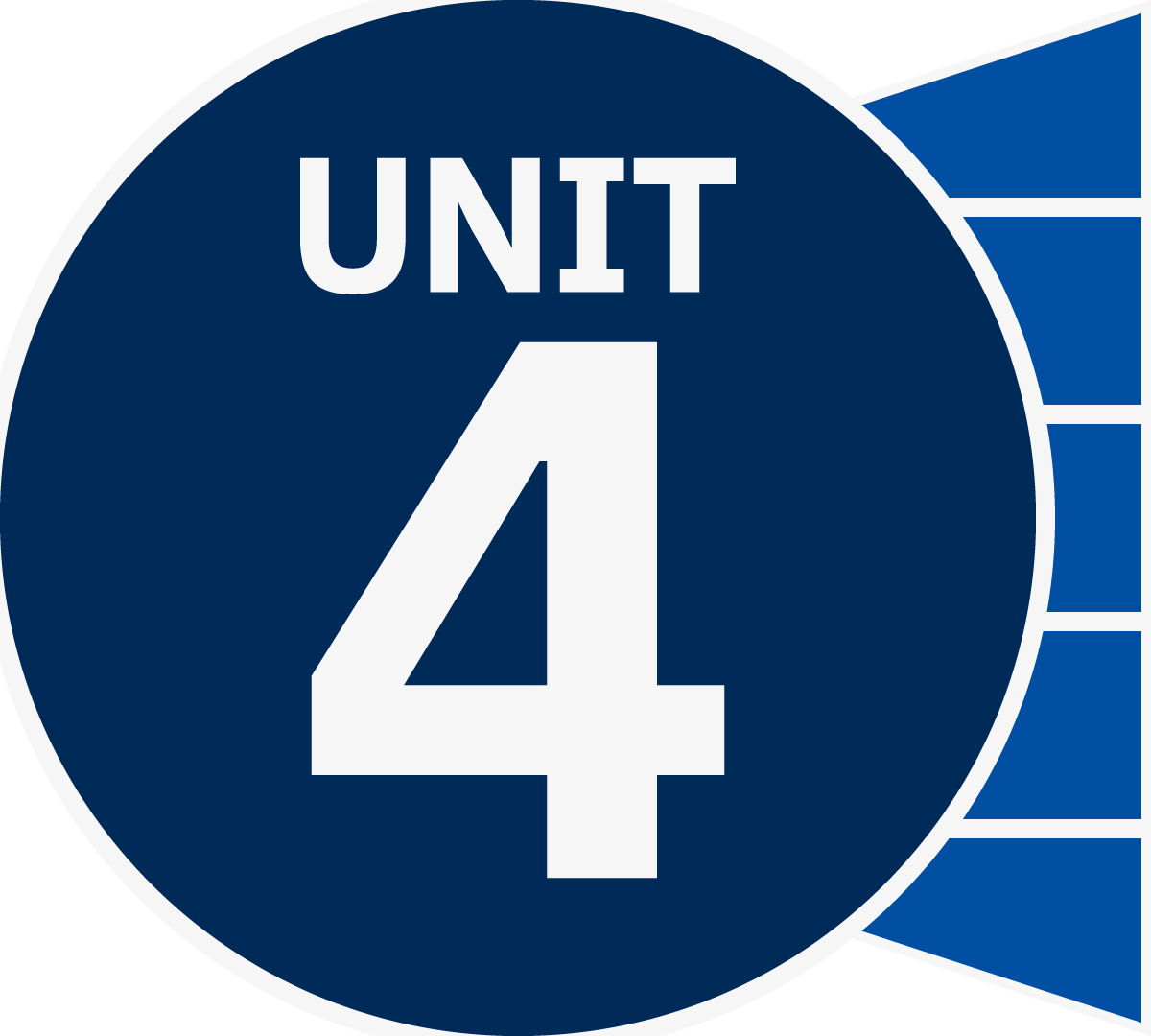Inquiry Companion: Unit 4
Unit 4 challenges students to investigate both the genius and the missed opportunities in the system of checks and balances and division of power. Our Inquiry Companion Guide activities for Unit 4 facilitate student participation in inquiry-based civics learning for each strategy.
Students engage by creating a Venn diagram of the division of power between the federal government and state governments as well as explore the role federalism plays in their lives today. They will explain the division of powers as illustrated in Marbury v Madison by participating in a Paideia Seminar. Students then elaborate on their knowledge of judicial review through a democratic experience simulation. Finally, students will evaluate their understanding of constitutional principles by creating an infographic.
Best practices for culturally responsive teaching weave through each activity.
Inquiry Guide Activity
- Unit 4, Lesson 26: How Does American Federalism Work?
- Unit 4, Lesson 17: How Did the Constitution Create a Federal System of Government?
- Active learning
- Attentiveness to political matters
- Citing evidence
- Collaboration
- Critical thinking
- Primary source analysis
- Relationship skills
- Self-management
- Identify the constitutional principle of federalism and how it applies to the supremacy clause.
- Annotate and analyze primary source documents to determine the division of powers between state and federal governments.
- Evaluate which level of government holds the power.
- Students will create an infographic to answer the compelling question: “Whose power is supreme?”
- Whose power is supreme?
- federalism A form of government in which power is divided and shared between a central government and state and local governments.
- reserved powers Powers that are retained by the states, encompassing areas not expressly granted to the federal government.
- supremacy clause Article VI, Section 2 of the Constitution: Laws passed by Congress, and the treaties of the United States “shall be the supreme Law of the Land” and binding on the states.
The constitutional principle of federalism lies at the heart of the United States political system. Federalism embodies a delicate balance of power between the federal government and individual states. Federalism distributes authority among different levels of government, including local, state, and federal. Certain powers are explicitly granted to the federal government in the Constitution, while others are reserved for the states, and some powers are shared. Shared powers are called concurrent powers.
The Constitution’s supremacy clause, enshrined in Article VI, underscores the balance of power by establishing federal law as the supreme law of the land, which would prevail, or win, over conflicting state laws or regulations. This clause ensures the same application of federal laws and treaties apply across all states, which, in theory fosters national unity and avoids confusion around conflicting laws. Essentially, the supremacy clause is a constitutional safeguard against state encroachments on federal authority, ensuring that the central government retains supremacy in almost all matters.
An example showcasing the application of federalism and the supremacy clause is in the realm of immigration law. While the Constitution grants Congress the authority to establish uniform rules of naturalization, states possess certain powers regarding regulating people immigrating across their borders. However, conflicts can arise when state laws diverge from federal immigration policies. In the landmark case of Arizona v. United States (2012), the Supreme Court ruled that key provisions of Arizona’s controversial immigration law, which sought to empower state law enforcement to enforce federal immigration laws, were preempted by federal law. This decision affirmed the supremacy of federal immigration policy over conflicting state measures, illustrating the principle of federalism in action and clarifying that in matters of immigration, the federal government holds the ultimate power. Similar cases have continued to go to the Supreme Court in recent years, highlighting the persistent debate about “whose power is supreme?”
Additional resources for teacher background include:
Teachers should preview all student materials and resources prior to the lesson.
Part 1
- Welcome students to social studies.
- Introduce the inquiry question: “Whose power is supreme?”
- Allow students time to make a prediction about the inquiry question as well as offer their own supporting questions.
- Play The Supreme Law of the Land. While students watch, they should listen for reasons why the Framers established the supremacy clause.
- Play the video a second time to ensure comprehension, if needed.
- Allow time for a brief discussion or an opportunity for students’ questions.
- Review the concept of federalism by telling students that the American constitutional system is made up of two levels of government: national and state. The system is called federalism. The powers of and the boundaries between the national and state governments have never been clear. Sometimes, the national and state governments seem to work in harmony. Sometimes, they seem locked in a struggle for power. Ground the class in the definition of federalism: a form of government in which power is divided and shared between a central government and state and local governments.
- Using your routine strategy for establishing groups, divide students into groups of three or four.
- Distribute Who Holds the Power? and as a class review the Annotation Station strategies to ensure students understand expectations:
- ❍ Circle words you don’t know, and take a moment to find the definition.
- Highlight in YELLOW phrases that confuse you. Use context clues to figure out their meaning.
- Highlight in RED any references to the powers of the federal government.
- Highlight in GREEN any references to the powers of the state government.
- ✩ Star the phrase or line that you find most important.
- Instruct students to work collaboratively to read and annotate Who Holds the Power? Students will work as a team to restate the constitutional statement in their own words and determine whether it designates power to the state or federal government.
- Circulate around the room, encouraging each group, observing progress, and redirecting as needed.
- Briefly facilitate a discussion about the constitutional principles of federalism and reserved powers while reviewing Who Holds the Power? as a class.
Part 2
- Tell students they will now explore the authority of both state and federal governments to determine which level of government holds the power.
- Distribute Analyze the Data. Tell students they will be conducting a constitutional investigation using primary sources.
- Students will remain with their groups and should be assigned to one of the following investigations found on Analyze the Data:
- Voting
- Driver’s license
- Civic education
- Distribute and review Analyze the Power as a class to ensure students understand expectations.
- Tell students they will work in teams to investigate their assigned topic on the Analyze the Data resource and use the Analyze the Power organizer to capture evidence and wonderings.
- Circulate around the room, encouraging each group, observing progress, and redirecting as needed.
- Facilitate a class discussion to further explore the division of power with regard to voting, driving, and education by asking the following questions:
- Which level of government holds the supreme power with regard to voting rights? Driver’s licenses? Education?
- Do you think the voting age for federal elections should be lowered nationally to 16? Why or why not?
- Do you think the minimum age for driving should be the same for the entire country? Why or why not?
- Do you think that all high school students in the U.S. should be required to take a civics class as a graduation requirement? Why or why not?
- Is there a benefit to state/local control?
- Is there a benefit to federal control?
- Can you think of other examples when state or local governments should have the authority to make decisions?
- Can you think of examples when the federal government should hold the supreme power?
- Students will use their Analyze the Data and Analyze the Power organizer to create an infographic that illustrates and answers our inquiry question: “Whose power is supreme?”













